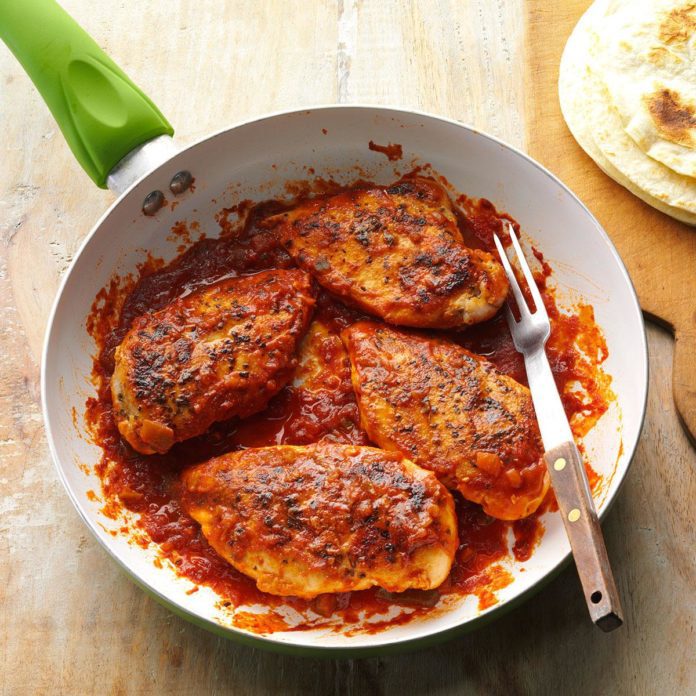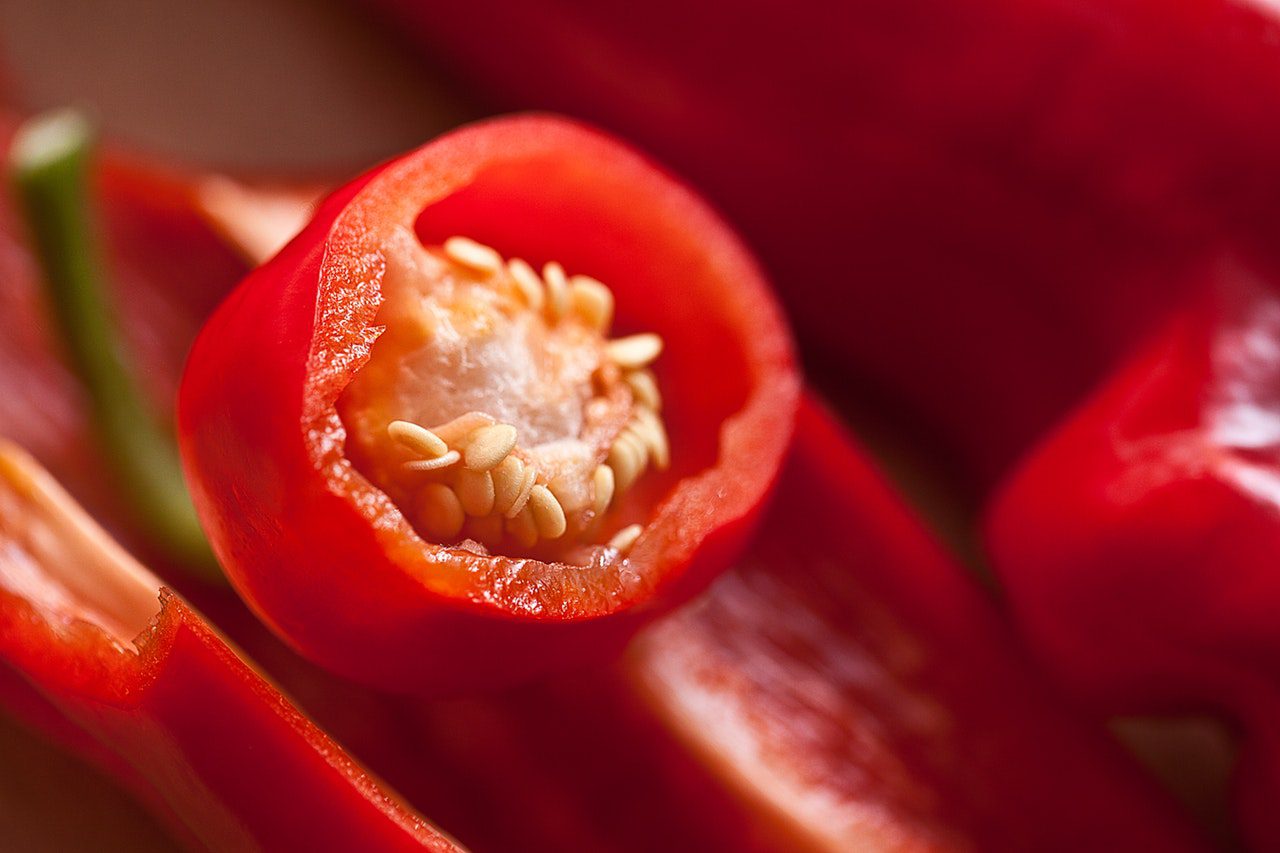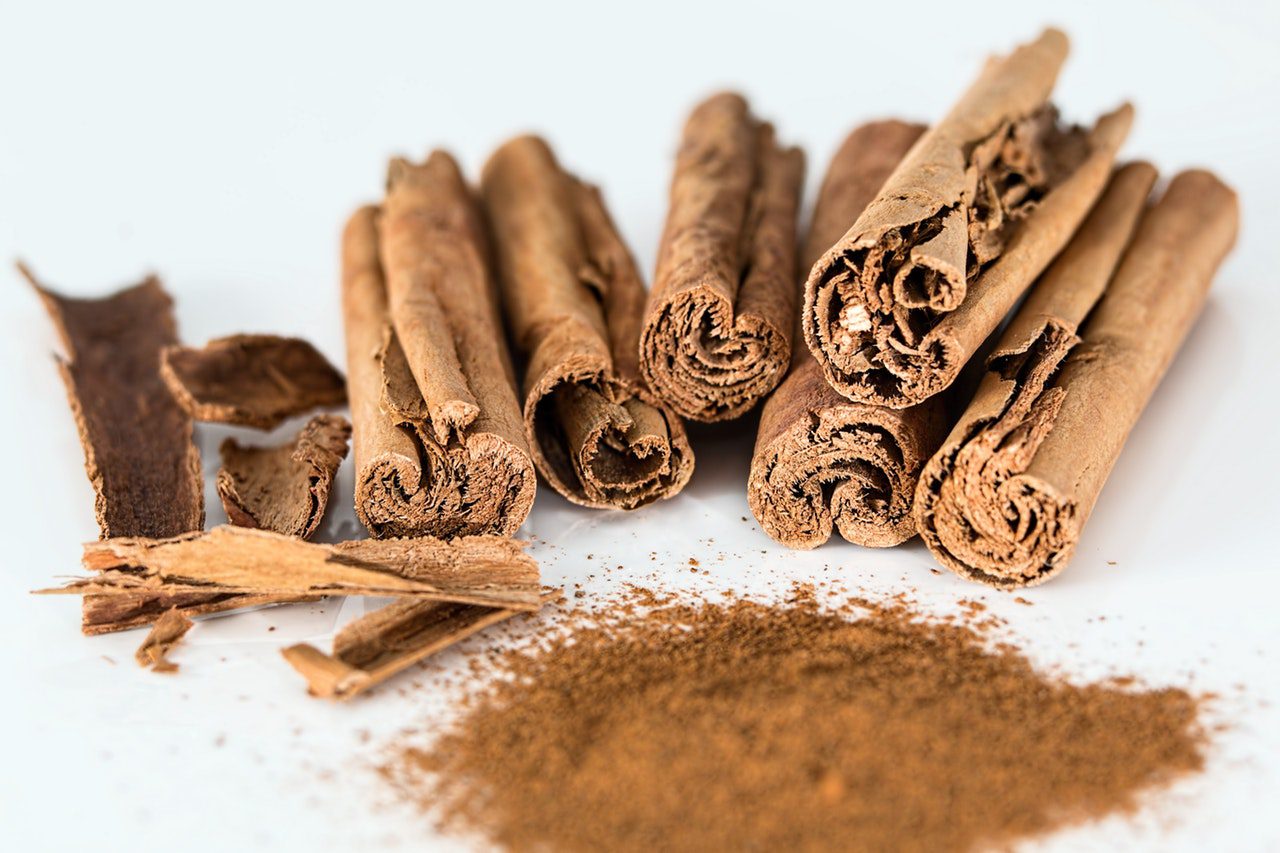Common Spices You Need For Uncommonly Delicious Food
One thing that I love to do is travel.
I have been to several countries in Europe and Asia, and I always like to explore the food while I’m in another country. Different countries have their own unique meals, and they make their food with ingredients that are special to their country.
If you thought you couldn’t get that kind of flavor in your kitchen, you’d be wrong.
Here’s why:
The essential ingredients in many recipes are common spices.
for example:
- India: cumin, cardamom, and clove. Italy has basil, red pepper, and oregano
- China: ginger, garlic, and star anise
- Israel: turmeric, black pepper, and cumin
After I visit a country, I love to take their spices and recipes home with me so that I can experience the food all over again.This habit is no different than what the United States has done for hundreds of years and why some international spices became common spices for the U.S.The people of each country are proud of the spices they use, and citizens of the United States are no different. We borrowed spices from other countries and now use them in our own cuisine, but we also created our own spices over the years.Also, today we grow some of our own herbs and spices.
The common spices that we use for our food are a representation of our culture and personality.
For example, the southwest region uses chili powder and cumin, while the southeast uses garlic powder, cayenne pepper, and dried herbs.
The common spices that you will find in a typical U.S. kitchen are a result of hundreds of years of historical and cultural influence.
simply put: common spices, here, can create uncommon flavors for you!
What Are Common Spices?
The word spice refers to any dried part of a plant, except for the leaves, that are used for seasoning and flavoring a recipe but are not the main ingredient.
Common spices are the spices that are used the most in cooking.
via GIPHY
A Quick History of Common Spices
The history of common spices dates back to over 3,000 years of international cuisine and culture. Each region’s culture continues to influence what common spices you will have in your kitchen.
3,500 BC to the 15th Century
As far back as 3,500 BC, the ancient Egyptians used spices for flavoring food, cosmetics, and even embalming their dead. The spices and their use spread to the Middle East to the Eastern Mediterranean and Europe.
For almost 5,000 years, Arab middlemen controlled the spice trade.
Then in the 15th century, European explorers began their long journeys to discover the origin of spices
“spicy trivia”
- 1497: Portuguese navigator Vasco De Gama discovered a sea route around the southern tip of Africa
- 1498: De Gama reached the southwest coast of India and brought nutmegs, cloves, cinnamon, ginger, and peppercorns home
The Middle Ages
During the Middle Ages, spices were as valuable as gold in Europe.
Also, it was the single largest force driving the world’s economy.
“Fun, but gross, fact “
Often spices were an important addition to food, to mask its less than fresh flavor due to lack of refrigeration.
At various times throughout history, the Portuguese, Dutch, French, Spanish, and English had monopolies over the spice trade. The fierce competition over spices was the driving force behind the colonization over India and other Asian countries.
Image via: commons.wikimedia.org
The 17th Century: The U.S. enters the market
Americans began their entry in the spice race in 1672.
Boston native Elihu Yale, a former clerk at the British East India company, began a spice business and made a fortune that helped him start Yale University.
Then in 1797, Captain Jonathan Carnes made a trip to Indonesia that changed the spice trade in the United States.
When he returned, he had a large load of pepper that he traded directly with the Asian natives rather than the European-held monopolies.
As a result, he made a 700 percent profit and Salem, Massachusetts became the center of the spice trade in North America.
Over the next 90 years, almost a thousand more ships would make the voyage that Captain Carnes started.
Image via: commons.wikimedia.org
The U.S. influence today
Although the U.S. adopted spices from other countries, they also make their own spices.
- 1835: Texan settlers developed chili powder as an easier way to make Mexican dishes
- 1889: food researchers in Watsonville, California, established techniques for dehydrating onions and garlic
- 1906: Eugene Durkee wrote the first standards for spice purity under the U.S. Pure Food and Drug Act
- WWII: Americans discover Asian and European cuisine is delicious, take recipes home after the war
“spicy trivia”
- The U.S. is the world’s biggest spice buyer, keeping it at the top of the list as one of the strongest nations.
9 Common Spices You Should Have in Your Kitchen
There are many different spices used in American cooking. Nine common spices used in many recipes are Ginger, Cumin, Red and Black Pepper, Cinnamon, Cayenne Pepper, Basil, and Oregano.
ginger
Ginger is an ancient spice that not only tastes good but has powerful anti-inflammatory properties. It can also act as a cold remedy, alleviate digestive problems, and improving gut health.
It is a flowering plant, and its root is where the spice comes from. All over the world, ginger is added to food and beverages to enhance their flavor.
Some of these foods and beverages include:
- teas
- coffee
- lemonade
- cocktails
- beer
- wine
- candied ginger
- Indian and Asian dishes
“Carrot ginger soup”
This recipe is excellent for fighting colds and cleansing the system.
Full of vegetables and spice, it has 18.1 grams of carbohydrates and 5.6 grams of protein. The high protein content, spice, and warmth make it a great meal for cold winters.
Image via: allrecipes.com
1 hr 30 mins
6 servings
Instructions:
Melt butter into a large pot over medium heat. Add onion, ginger, and garlic. Saute about 15 minutes or until softened.
Next, add broth, carrots, and wine. Bring to a boil, then reduce heat to medium and simmer for about 45 minutes or until carrots are tender.
When it’s tender enough, puree the soup in an immersion blender until carrots are no longer chunky and the soup is thick. Add lemon juice, salt, pepper, and curry powder.
Serve with chives and fresh black pepper.
Ingredients
- 3/4 stick unsalted butter
- 1 cup dry white wine
- 1 cup dry white wine
- 1 large chopped yellow onion
- 2 tablespoons fresh lemon juice
- 1/2 cup fresh chopped ginger
- 1 teaspoon salt
- 5 cloves of minced garlic
- 1 teaspoon freshly ground black pepper
- 7 cups low-sodium chicken broth
- 1/8 teaspoon curry powder
- 1 cup dry white wine
- 1 1/2 pounds of carrots, peeled and cut into 1/2-inch pieces
- 1 tablespoon snipped fresh chives or more to taste
Cumin
A flowering plant that belongs to the family Apiaceae. Cumin seeds are where the spice comes from, and it is either ground or whole. This spice has many health benefits including aiding in digestion, boosting immunity, preventing anemia, and treating asthma and bronchitis.
Lastly, the spice adds flavor to some alcoholic beverages and desserts.
Common Recipes That Use Cumin Are:
- curries
- soups
- stews
- Indian, Asian, Latin American, and African recipes
“CUMIN CHICKEN”
This recipe has cumin and oregano, which boosts immunity and aids in digestion. The spicy chicken recipe is great any time of the year but is a great comfort food during the wintertime.
Image via: tasteofhome.com
30 mins
4 servings
Instructions:
Mix 3/4 teaspoon each of cumin, oregano, and garlic salt. Then sprinkle the mixture over both sides of the chicken.
Ingredients
- 1 teaspoon ground cumin
- 4 boneless, skinless chicken breasts, 4 ounces each
- 1/2 teaspoon dried oregano
- 1/2 cup picante sauce
- 1/4 teaspoon garlic salt
- 1 tablespoon canola oil
- 1/4 cup water
- 1 teaspoon reduced-sodium chicken bouillon granules
In a large nonstick skillet, heat the oil on medium heat then brown both sides of the chicken. In a small bowl, mix water, picante sauce, bouillon, and the remaining cumin.
Next, pour the mixture over the chicken and bring to a boil. Reduce the heat, then simmer, covered.
Heat for 8 to 12 minutes or until the chicken reaches 165 degrees Fahrenheit. Remove the chicken from the pan and keep warm. Bring the sauce to a boil and cook, uncovered while occasionally stirring, for 3 to 4 minutes or until the sauce is thick.
Serve the sauce with the chicken.
Red Pepper Flakes
Red pepper flakes are made from hot, dried, and crushed red pepper. Although the ingredient is sometimes cayenne pepper, other types of red peppers can make the flakes.
These peppers include de Arbol chiles or Thai red chiles. The spice is a great addition as a condiment in many foods including pizza and omelets.
Red pepper flakes have health benefits that include soothing an upset stomach and ulcers, boosting heart health, and regulating diabetes.
Black Pepper
Black pepper is one of the most popular common spices. It comes from the fruit of the black pepper plant and is from the Piperaceae family.
Furthermore, it acts as both a spice and a medicine.The spice is native to India and one of the most widely traded spices in the world.
Besides being a flavor enhancer, the spice has many health benefits including
aiding in digestion, assisting in the breakdown of fat cells, helping with respiratory relief, and enhancing cognitive function.
“CUCUMBER BASIL SALAD”
Made with fresh basil and black pepper, this salad reduces inflammation and aids in digestion. It is also a very refreshing salad for spring and summer.
Image via: allrecipes.com
8 hrs 15 mins
12 servings
Instructions:
Run spinach and basil through a food processor until it is finely chopped.
Then mix the spinach mixture, tomatoes, cucumbers, garlic, pepper, salt, and red onion together in a bowl with an air-tight lid. Cover the bowl and refrigerate for eight hours to overnight for best taste.
Ingredients
- 2 cups fresh baby spinach
- 1 large minced red onion
- 2 tablespoons chopped fresh basil
- 3 cloves minced garlic
- 1 pound seeded and minced Campari tomatoes
- 1 teaspoon salt to taste
- 2 large seedless, peeled, and minced cucumbers
- 1 teaspoon cracked black pepper
Cayene pepper
Cayenne pepper is a spice that originated in Central and South America and is a flavor enhancer in many dishes.
It began as an ingredient in Native American cuisine that dates back to 9,000 years.
The pepper is dried and ground to make the spice.
It’s popular for its many health benefits that include relieving pain and congestion, burning calories, and treating circulatory problems.
“SMOKY BEEF AND BACON CHILI”
This recipe has cayenne pepper, which gives it a kick and also relieves pain and congestion while aiding in digestion. The hearty and spicy meal is great for the wintertime.
Image via: myrecipes.com
1 hr 15 mins
12 servings
Instructions:
In a large, heavy-bottomed pot over medium-high heat, cook the bacon for 4 minutes or until it begins to brown. Add the onion and lower the heat to medium, cover, and cook, stirring occasionally.
Cook until the onion is translucent, or 4 to 7 minutes.
Then uncover the pan, add the garlic and cook for one minute. Increase the heat to medium-high and add the ground beef.
Break it up with a wooden spoon and cook for 7 minutes or until it browns. Stir in the spices and one teaspoon salt, and cook for one minute. Add the tomatoes, tomato sauce, beer, and Worcestershire sauce and bring to a boil.
Reduce heat to medium-low, cover partially, and cook for 30 minutes. Add beans and cook uncovered for 10 minutes. Season with salt to taste.
For extra flavor, add toppings such as sour cream, shredded cheddar cheese, and sliced green onions.
Ingredients
- 1 large finely chopped onion
- 1 large minced garlic clove
- 8-ounce can tomato sauce
- 1 1/2 pounds lean ground beef
- 1/2 teaspoon to 1 1/2 teaspoons cayenne pepper
- 1 tablespoon, plus 1 1/2 teaspoons chili powder
- 1 1/2 teaspoons ground cumin
- 2 slices finely-chopped and thick-cut bacon
- 1 1/2 teaspoons sweet smoked Spanish paprika
- 1 teaspoon asalt to taste
- 14.5-ounce can of regular crushed or crushed fire-roasted tomatoes
- 1 teaspoon Worcestershire sauce
- 14.5-ounce can pinto beans, drained
- 1 cup flavorful, medium-bodied beer
Cinnamon
Cinnamon is a spice from the bark of cinnamon trees.
Cooks use the spice in many baking and cooking recipes to enhance the flavor of the food. Cinnamon has many health benefits including acting as an antioxidant and anti-inflammatory agent, cutting the risk of heart disease, and lowering blood sugar.
boasts many health benefits including fighting cancer, relieving stress, and reducing inflammation and swelling.
It Is An Ingredient In Many Foods, Including:
- teas
- bread
- stews
- oatmeal
- Indian and Latin American dishes
Basil
Basil is a member of the mint family. This herb acts as a spice and enhances the flavor of many dishes.
The leaves are a great addition to various recipes, but dried basil will most likely have a weaker flavor than the basil leaves.
Besides adding flavor to food, it also
It Is An Ingredient In Many Foods, Including:
- Italian food
- pesto
- chicken dishes
- soups
Oregano
Also a member of the mint family, this herb acts as a spice in many recipes, enhancing the flavor of the food. The herb is native to southwest Eurasia and the Mediterranean area.
The leaves are the ingredient that is added to dishes.
However, the herb has a stronger flavor when it is ground, as opposed to staying in its leaf form. This quality is rare in herbs. Therefore, ground oregano is a great ingredient and flavor enhancer to many dishes.
Similar to the other spices and herbs it has health benefits that include boosting immunity, aiding in digestion, and improving heart health.
“Roasted potatoes with oregano”
This easy and nutritious recipe has oregano and black pepper, which aid in heart health and digestion. It is great any time of the year.
Image via: geniuskitchen.com
1 hr 15 mins
6-8 servings
Instructions:
Preheat oven to 350 degrees Fahrenheit. Then place the cut potatoes in a single layer in a large baking dish.
Ingredients
- 3 pounds small red potatoes, scrubbed and cut into quarters
- 2 tablespoons Greek oregano
- 1 teaspoon salt
- 1/2 teaspoon black pepper
- 1/3 cup olive oil
Next, sprinkle the potatoes with salt, oregano, and pepper. Toss around a little to coat evenly and drizzle the olive oil over the potatoes.
Bake at 350 degrees, uncovered for about an hour or until the potatoes are at the desired tenderness.
Tip: Make your own mixes
To make sure you use your dried spices quicker, make your own spice mixes.
For instance, 1 tablespoon of ginger, nutmeg, and allspice combined with 4 1/2 tablespoons cinnamon and 2 teaspoons ground cloves makes pumpkin pie spice for your delicious holiday pie.
Rosemary
A woody, evergreen herb native to the Mediterranean region, it is one of the most commonly found herbs on a spice rack. The herb is found in leaf or dried powder form.
The flavorful herb also boasts health benefits such as enhancing brain function, preventing Alzheimer’s, reducing stress, and detoxing the liver.
Rosemary is versatile and adds a great flavor to:
- soups
- stews
- sauces
- roasts
- stuffing
- tea
Spice Hacks
You might love common spices, but are looking for an easier way to eat them, use them, and keep them fresh for the longest time possible. Here are some spice hacks to make your life easier.
Make Your Own Spices
Looking to make or buy a new spice but don’t want to go to the store or spend the money? If you’re in the mood for a South Asian flavor, you can easily make Garam Masala using equal parts:
- coriander
- cumin
- black peppercorn
- cardamom
- cloves
- nutmeg
Alternatively, you can make it using one part cumin and 1/4 part allspice.
Homemade Garam Masala is often better and more fresh than its store-bought counterpart, that has often been on the shelf for months.
Are you out of nutmeg?
Mix the following spices:
- ginger
- cloves
- cinnamon
- mace
- allspice
Also, you can use one part ginger and 1/4 parts each cinnamon, allspice, and cloves.
Help your spices last longer
Want your spices to last as long as possible? Make sure you:
- store spices in a cool, dark cupboard away from direct light
- close them tightly when they’re not in use
“spicy tip”
- Rub or crush a small amount in your hand, taste and smell them to check if good. If the aroma is weak and the flavor is not apparent, then it is time to replace the spice.
Check ethnic aisles for affordable spices
Do you have an international food aisle at your local grocery store? If so, check that for common spices. These aisles often have spices cheaper than the ordinary spice aisle.
Tips on Organizing Your Spices
Here are some tips on how to best organize your spices. You can either utilize your own space or make your own spice rack.
Utilize your space
Have a pot and pan cabinet?
Add a spice rack to the inside of the door for easy access.
Watch this video to learn how to make a spice rack:
How Long Do Spices Last?
A spice’s shelf life depends on the type of spice and how it is stored.
- Whole spices: 4 years
- Dried spices: 1 to 3 years
- Fresh herbs: 1 to 3 weeks
Spicy storage tip:
Wash and dry your fresh herbs before storing them. Wash them with cool water then lay them on a paper towel to dry. This method will help them last longer.
How to Pick the Right Spices for You
The right spices for you depends on the type of food you enjoy and the recipes you’re making.
Do you like spicy food? Choose cayenne pepper, cumin, or red pepper flakes. Do you prefer more of a sweet taste? Choose cinnamon or nutmeg.
Also, don’t be afraid to experiment with spices and make them your own.
For example, when I first became interested in spices, I experimented with different recipes and mixed spices together until I got the right combination that tasted good in my food and gave it the flavor it needed. Recipes are a good place to start, but it’s okay to take liberties and add as much spice to a meal until it tastes good to you.
However, it is important to know which spices are best for certain foods.
The handy chart below is a great guide for choosing the right combination of food and spices:
MEXICAN
- coriander
- cumin
- oregano
- garlic powder
- cinnamon
- chili powder
caribbean
- allspice
- nutmeg
- garlic powder
- cloves
- cinnamon
- ginger
french
- nutmeg
- thyme
- garlic powder
- rosemary
- oregano
- herbes de provence
NORTH AFRICAN
- cardamom
- cinnamon
- cumin
- paprika
- turmeric
- ginger
- ras el hanout
cajun
- cayene pepper
- oregano
- paprika
- thyme
- rosemary
- bay leaves
- cajun seasoning
thai
- basil
- cumin
- garlic
- ginger
- turmeric
- cardamom
- curry powder
MEDITERRANEAN
- oregano
- rosemary
- thyme
- bay leaves
- cardamom
- cinnamon
- cloves
- coriander
- basil
- ginger
INDIAN
- bay leaves
- cardamom
- cayenne pepper
- cinnamon
- coriander
- cumin
- ginger
- nutmeg
- paprika
- turmeric
- garam masala
- curry powder
Middle eastern
- bay leaves
- cardamom
- cinnamon
- cloves
- cumin
- ginger
- coriander
- oregano
- za ‘atar
- garlic powder
Icons made by Freepik from www.flaticon.com and licensed by CC 3.0 BY
Where Do Common Spices Go from Here?
Spices are constantly evolving, and their cultural uses change over time.
What is considered a common spice now may not be the same in 50 or 100 years. What will remain the same is that different regions of the world will borrow spices from each other and make them their own.
Some of those borrowed spices may become common spices in many international kitchens. That is what makes spices so special. They add flavor and personality to a variety of dishes, regardless of where they come from.
Now, we have a question for you: what is your best homemade spice, or your go-to spice combination to really rock people’s socks off? Let us know down in the comments!






























